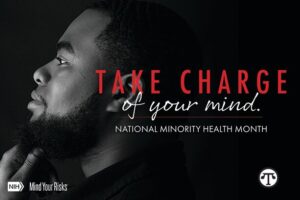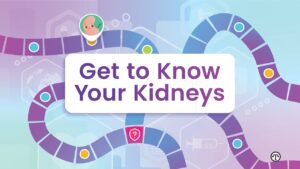Health, Home & Family
 (NAPSI)—Good news for American military members and their families: A new program aims to provide emergency communications briefings to 100% of military recruits.
(NAPSI)—Good news for American military members and their families: A new program aims to provide emergency communications briefings to 100% of military recruits.
Command, signed a historic Memorandum of Understanding (MOU) to present the Red Cross Emergency Communication brief to all new military recruits.
What it Means
“For decades, the American Red Cross has provided services to applicants at Military Entrance Processing Stations throughout the nation,” said Colonel Megan B. Stallings, Commander, U.S. Military Entrance Processing Command. “At our stations, volunteers provide information that could be critical to applicants and families in an emergency. It was a pleasure to meet with Dr. Jordan and discuss our Memorandum of Understanding.”
The Red Cross traditionally has volunteers who go to a Military Processing Entrance Station (MEPS) and meet with recruits who have recently taken the oath of enlistment. The recruits are preparing to ship to basic training, based on their branch, all over the country.
“The MEPS command is committed to setting the expectation with all 66 MEPS stations to present the Red Cross brief to 100% of shippers,” said Dr. Michael Jordan, Vice President of Service to the Armed Forces and International Services at the American Red Cross. “It’s a bold and extraordinary commitment that will benefit all new recruits.” Continue reading
 (NAPSI)—Decades of helping writers and artists have resulted in the latest edition of L. Ron Hubbard presents Writers of the Future by the winners of the 40th annual Writers of the Future and the 35th annual Illustrators of the Future L. Ron Hubbard achievement awards.
(NAPSI)—Decades of helping writers and artists have resulted in the latest edition of L. Ron Hubbard presents Writers of the Future by the winners of the 40th annual Writers of the Future and the 35th annual Illustrators of the Future L. Ron Hubbard achievement awards.
The Winners
The grand prize winner for writing was Jack Nash for his story, “Son, Spirit, Snake,” which was illustrated by Pedro N. The grand prize-winning artist was Tyler Vail for illustrating writer John Eric Schleicher’s story, “Squiddy.”
Explained John Goodwin, President of Galaxy Press, “Our contests promote the arts welcoming diversity, ethnicity, creativity and equality, with no age limits, and blind judging. All are welcome to enter.”
The 26 winners hailed from all over the United States, Canada, China, Malaysia, The Netherlands, New Zealand and the United Kingdom.
About The Contests
Following the 1982 release of his internationally acclaimed bestselling science fiction novel, “Battlefield Earth,” L. Ron Hubbard created the Writers of the Future Contest (www.writersofthefuture.com) in 1983 to provide a means for aspiring writers of speculative fiction to get that much-needed break. Due to the success of the Writing Contest, the companion Illustrators of the Future Contest was created in 1988. Continue reading
 (NAPSI)—Military families and veterans know that relocating loved ones when PCS orders arrive can be stressful—but there are steps you can take to make things easier.
(NAPSI)—Military families and veterans know that relocating loved ones when PCS orders arrive can be stressful—but there are steps you can take to make things easier.
Keeping Military Families Connected
Internet and TV services typically come at the cost of being bound to a contract for a specific amount of time. This can make Internet changes, TV upgrades, and beyond even more difficult for military families.
What You Can Do
To ensure a seamless transfer of Internet and TV service or to find new providers when relocating, consider these tips:
Plan Ahead: Research Internet and TV service providers in your new location well before your move. Check if your current provider is available there and what the terms are for transferring service. If you need to find a new provider, compare plans, costs, and reviews to make an informed decision. To help, SmartMove has compiled the resources you need to stay connected during your move—from Service Members Civil Relief Act protections to military offers by specific providers. Continue reading
(NAPSI)—When it comes to mental health, many people across the U.S. have experienced their share of challenges–but help may be at hand.
The Problem
The issue is especially concerning in rural America, where more than 60% of people report having a mental health condition—such as anxiety or depression—yet less than half of them get the help or treatment they need. Rural Americans face unique mental health stressors and barriers to accessing care, but those living in rural communities also boast unique support mechanisms that they can tap into to flip the script on mental health stigma.
An Answer
An example of those unique support mechanisms can be found in rural Georgia, where community leader Adaris Rivera has found hope in the resilience that living in a rural community presents. “Each person’s journey with mental health is deeply personal and unique, yet there’s a universal truth that support and hope are within reach for everyone. No one should feel isolated in their struggles,” she said. This is what inspired her to share her own story as part of a national public service advertisement (PSA) campaign called “Love, Your Mind” from Huntsman Mental Health Institute and the Ad Council. Continue reading
 When was the last time you engaged in pandiculation? No, it’s not a religious ritual or a Beyoncé dance move, and certainly not an intimate interplay. In fact, you needn’t look any further than your beloved four-legged companion to witness the essence of pandiculation.
When was the last time you engaged in pandiculation? No, it’s not a religious ritual or a Beyoncé dance move, and certainly not an intimate interplay. In fact, you needn’t look any further than your beloved four-legged companion to witness the essence of pandiculation.
Pandiculation is our body’s innate mechanism for awakening the sensorimotor system and priming us for movement. Picture yawning and stretching, extending your arms, elongating your spine, and rotating your head, or observe the graceful stretch of your pet after waking from a nap. Pandiculation isn’t merely stretching; it involves a controlled contraction of muscles at their maximum length, alleviating accumulated stress from inactivity.
The benefits of pandiculation are manifold, encompassing improved posture, circulation, mobility, strength, proprioception, pain reduction, lymphatic flow, and neural, somatosensory, and cognitive stimulation. It’s an instinctive response observed even in utero. Continue reading
 from the National Institute of Neurological Disorders & Stroke
from the National Institute of Neurological Disorders & Stroke
(NAPSI)—With nearly 800,000 Americans having a stroke each year, it remains a leading cause of death and long-term disability. Making matters worse for many Black/African American men is that they are at higher risk for high blood pressure and strokes, according to medical experts. For many health conditions, racial and ethnic minority communities are impacted at disproportionate rates. April is National Minority Health Month, a good time to raise awareness about the importance of improving the health of minority communities and reducing health disparities. During this month, the National Institute of Neurological Disorders and Stroke (NINDS) is raising awareness of this important topic and sharing tips to help manage the risk of stroke.Over time, uncontrolled high blood pressure can damage blood vessels and lead to a stroke. High blood pressure can also lead to other damage in the brain that has been associated with dementia. The good news is people can take steps now to get—or keep—their blood pressure numbers in a healthy range to help prevent stroke and dementia later in life. Continue reading
Laws guide our actions in various aspects of life, from obeying speed limits on the road to adhering to the principles of physics. Yet, there’s another law often overlooked in the realm of exercise: The Law of Specificity. Are you inadvertently violating this crucial principle? Let’s delve into how active seniors can leverage this law to enhance their quality of life and independence.
The Law of Specificity emphasizes that the effectiveness of practice is directly proportional to its similarity to desired performance outcomes. In simpler terms, if you want to excel at something, practice that specific activity. This principle holds immense significance for seniors aiming to maintain independence and enhance their overall well-being in later stages of life.
Enter the “Magnificent 7” — a set of foundational movement patterns crucial for functional mobility: squatting, lunging, pushing, pulling, rotating, hinging, and locomotion. These patterns underpin everyday activities, from dressing oneself to engaging in recreational pursuits like golf. By aligning exercise routines with these fundamental movements, seniors can effectively apply the Law of Specificity to bolster their quality of life and independence. Continue reading
1 pound pizza dough, at room temperature
All-purpose flour, for dusting
1 tablespoon extra-virgin olive oil
1/2 pound sweet Italian sausage, casings removed
3/4 cup whole-milk ricotta cheese
1/2 cup shredded mozzarella cheese 1/2 cup shredded provolone cheese 1/3 cup grated parmesan cheese
2 cloves garlic, minced
1/4 teaspoon dried oregano
1/2 small red onion, thinly sliced
4 cups baby spinach (about 21/2 ounces)
1 small bulb fennel, trimmed, cored and thinly sliced
1/2 cup chopped roasted red peppers
3/4 cup quartered marinated artichoke hearts, drained and halved Continue reading
 (NAPSI)—What better time to get to know your kidneys than National Kidney Month?
(NAPSI)—What better time to get to know your kidneys than National Kidney Month?
Your kidneys play a vital role in keeping your body functioning, which is why healthy kidneys are important to your overall health.
Your kidneys are two bean-shaped organs located just below your rib cage, one on each side of your spine. Working around the clock, your kidneys filter approximately 150 quarts of blood each day, removing waste and extra fluid from your body.
People can get kidney disease at any age, even children. Kidney disease means your kidneys are damaged and can’t filter blood the way they should.
Taking steps to protect your kidneys can help keep your body healthy and may prevent or slow the progression of kidney disease. It’s never too early to take steps to keep your kidneys healthy. Even small steps can make a big difference.
Talk with a health care professional about kidney disease risk factors and develop a plan together to address those risks. You may be at a higher risk for kidney disease if you have diabetes, high blood pressure, heart disease, a history of acute kidney injury or a family history of kidney disease. Continue reading
 (NAPSI)—Huge returns and little to no risk? Who wouldn’t want an investment opportunity like that? If you receive a pitch by phone, mail or email that makes such incredible financial promises as high returns with a low risk, you might ask yourself, “How is this possible?” Generally, it’s not.
(NAPSI)—Huge returns and little to no risk? Who wouldn’t want an investment opportunity like that? If you receive a pitch by phone, mail or email that makes such incredible financial promises as high returns with a low risk, you might ask yourself, “How is this possible?” Generally, it’s not.
The Problem
Postal Inspectors say investment opportunities or “get rich quick” schemes are a favorite of fraudsters. Whether they sell bogus securities or commodities, oil wells, rare coins, or cybercurrency, these fraudulent promoters try to get you to invest your money—and lots of it. Some swindlers even surround themselves with the trappings of legitimacy—rented office space, a receptionist, investment counselors, and professionally designed color brochures describing the investment. Continue reading

